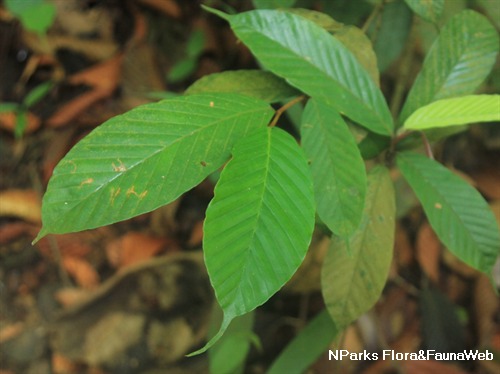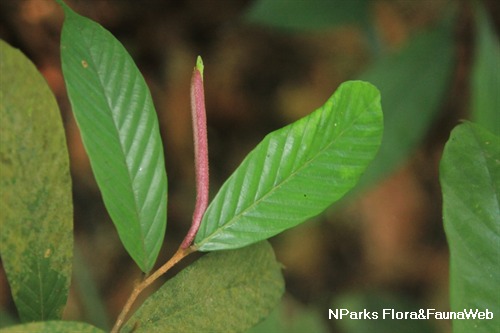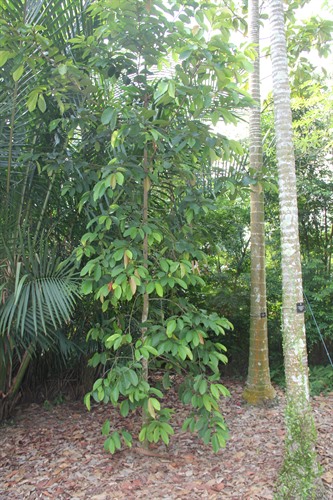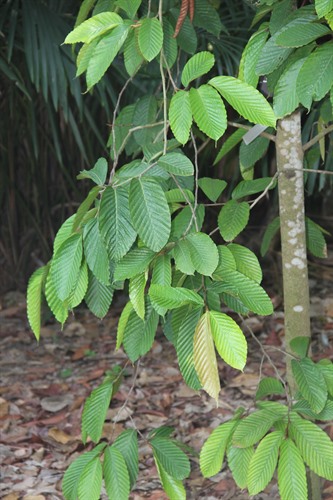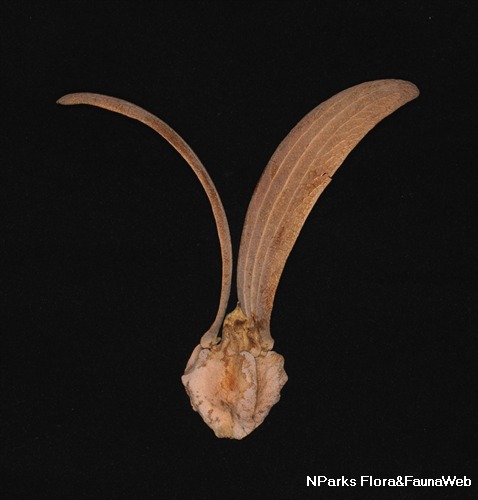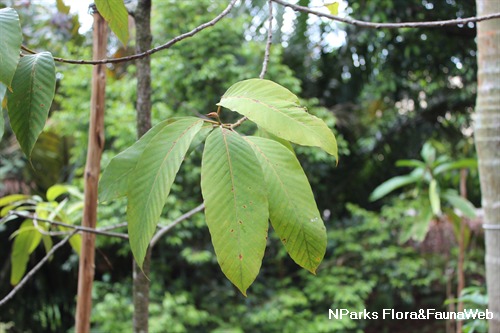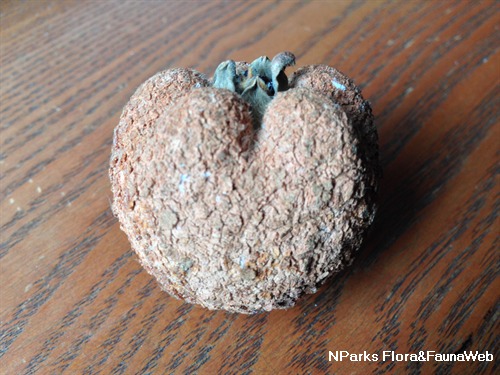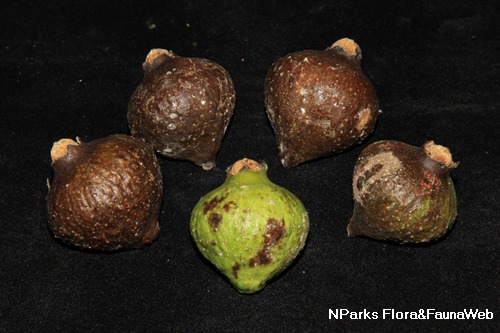
Name
Classifications and Characteristics
| Plant Growth Form | Tree |
|---|---|
| Mode of Nutrition | Autotrophic |
Description and Ethnobotany
| Growth Form | Large tree, able to grow up to about 45 m tall in its natural habitat. |
|---|---|
| Trunk | Bark is yellowish-brown to greenish-brown and surface flaky, girth size can reach up to 1.2 m wide, buttresses about 2 m tall and 3 m wide. |
| Foliage | Green obovate to broadly elliptic, thickly coriaceous, measuring about 6 - 12 cm long and 3.5 - 8 cm wide, petiole about 1 - 2 cm long, pink stipule about 8 cm long. |
| Flowers | Flowers borne on an axillary inflorescence up to 2.5 cm long, flowers bud about 3 mm long and 0.8 mm wide, stamens 30 present, anthers narrowly oblong. |
| Fruit | Fruit is winged nut, has 5 lobes around around the protruding nut apex, surface lenticellate. |
| Others - Plant Morphology | Listed as Critically Endangered in the IUCN Red List of Threatened Species. |
| Habitat | Can be found near freshwater swamps and streams. |
| Etymology | Genus Dipterocarpus is from Greek words "dipteros" which means "two-winged" and "karpos" which means "fruit" and they refer to the character of the fruit. Species tempehes is the local name of the tree in Kalimantan. |
Landscaping Features
| Desirable Plant Features | Ornamental Fruits |
|---|---|
| Landscape Uses | Parks & Gardens |
Fauna, Pollination and Dispersal
| Seed or Spore Dispersal | Abiotic |
|---|
Plant Care and Propagation
| Light Preference | Full Sun |
|---|---|
| Water Preference | Moderate Water |
| Plant Growth Rate | Moderate |
| Rootzone Tolerance | Moist Soils, Well-Drained Soils |
| Propagation Method | Seed |
Foliar
| Mature Foliage Colour(s) | Green |
|---|---|
| Foliar Arrangement Along Stem | Alternate |
| Foliar Attachment to Stem | Petiolate |
Floral (Angiosperm)
| Flower Colour(s) | Pink, White |
|---|---|
| Flower Grouping | Cluster / Inflorescence |
| Flower Location | Axillary |
Fruit, Seed and Spore
| Mature Fruit Colour(s) | Green, Yellow / Golden |
|---|
Image Repository
Others
| Master ID | 29655 |
|---|---|
| Species ID | 3964 |
| Flora Disclaimer | The information in this website has been compiled from reliable sources, such as reference works on medicinal plants. It is not a substitute for medical advice or treatment and NParks does not purport to provide any medical advice. Readers should always consult his/her physician before using or consuming a plant for medicinal purposes. |

